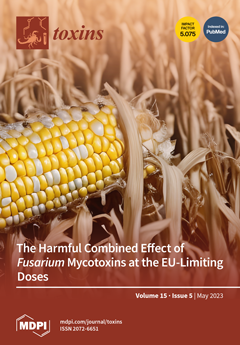The red tide-forming microalga
Heterosigma akashiwo has been associated with massive events of fish deaths, both wild and cultured. Culture conditions are responsible for the synthesis or accumulation of some metabolites with different interesting bioactivities.
H. akashiwo LC269919 strain was grown in a
[...] Read more.
The red tide-forming microalga
Heterosigma akashiwo has been associated with massive events of fish deaths, both wild and cultured. Culture conditions are responsible for the synthesis or accumulation of some metabolites with different interesting bioactivities.
H. akashiwo LC269919 strain was grown in a 10 L bubble column photobioreactor artificially illuminated with multi-coloured LED lights. Growth and production of exopolysaccharides, polyunsaturated fatty acids (PUFAs), and carotenoids were evaluated under different culture modes (batch, fed-batch, semicontinuous, and continuous) at two irradiance levels (300 and 700 µE·s
−1·m
−2). Continuous mode at the dilution rate of 0.2·day
−1 and 700 µE·s
−1·m
−2 provided the highest production of biomass, PUFAs (132.6 and 2.3 mg·L
−1·day
−1), and maximum fucoxanthin productivity (0.16 mg·L
−1·day
−1). The fed-batch mode accumulated exopolysaccharides in a concentration (1.02 g·L
−1) 10-fold over the batch mode. An extraction process based on a sequential gradient partition with water and four water-immiscible organic solvents allowed the isolation of bioactive fucoxanthin from methanolic extracts of
H. akashiwo. Metabolites present in
H. akashiwo, fucoxanthin and polar lipids (i.e., eicosapentaenoic acid (EPA)), or probably such as phytosterol (β-Sitosterol) from other microalgae, were responsible for the antitumor activity obtained.
Full article






